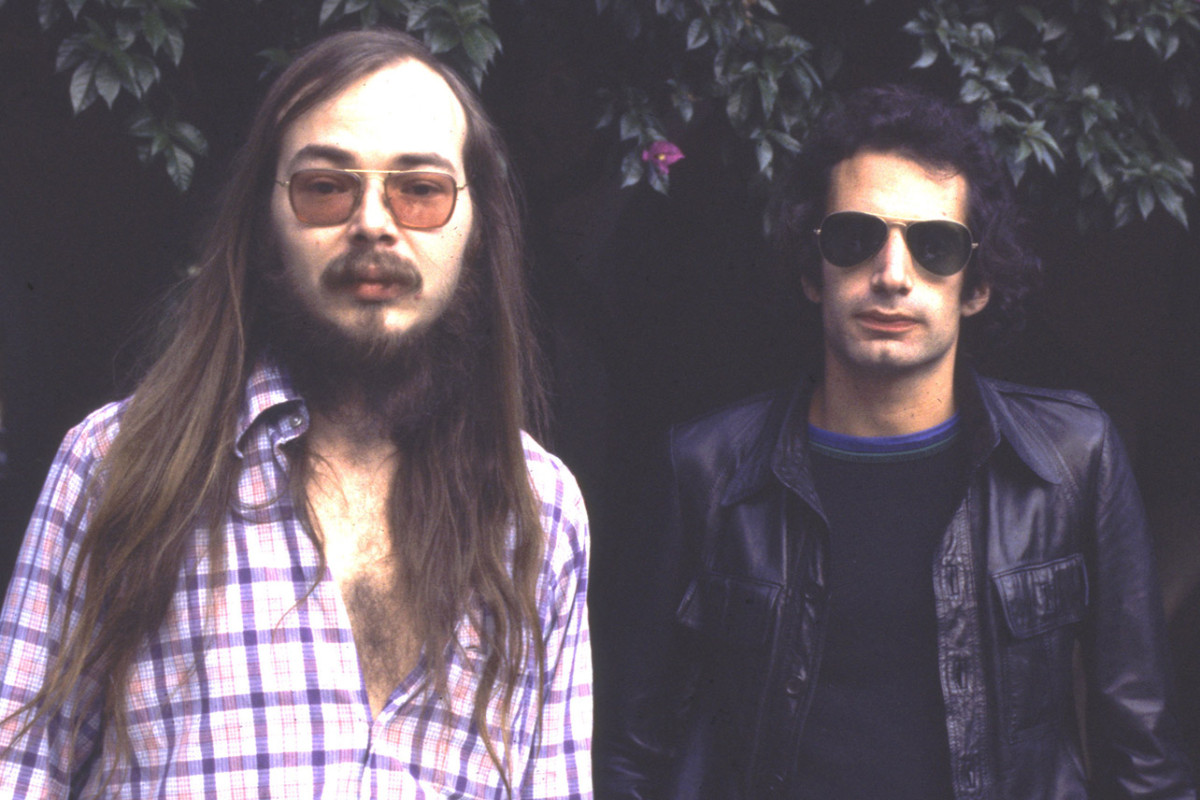Steely Dan are one of those bands you either love or hate. To some, they represent the highest peaks of songwriting and studio craft, with lyrical vignettes about lost souls and strange characters floating above impeccable instrumentation featuring complex chord structures and nods to jazz. To others, they’re bloated ’70s yacht rock at its worst, a musical diet soft-drink with no flavor or bite. Speaking personally, I am unable to hear them without a flood of memories of growing up in 1970s New York saturating my brain. I don’t own any albums and don’t know much beyond the hits, but yeah, I dig ‘em.
Released in the fall of 1977, Steely Dan’s sixth album Aja was the full flowering of their use of session musicians and studio wizardry. Painstakingly recorded over the course of a year, its pristine production was glossy and slick but funky enough to be sampled by hip hop artists a decade later. The album found them reaching deeper than ever before into their love of jazz and R&B but was still pop enough to be a hit and remains a mainstay of classic rock radio. Its creation was the subject of a 1999 episode of the British music documentary series Classic Albums, which is currently available for streaming on Amazon Prime.
Adding to the riddle of Steely Dan is the fact that they’re not really a band. Centered around songwriters Walter Becker and Donald Fagan, the same lineup played on their first three albums but starting with 1974’s Pretzel Logic, they increasingly relied on studio musicians. “We toured for a while to support the first couple of albums but didn’t really like it so we stopped in 1974,” explains Becker, who also played bass and guitar with the band before his death in 2017. “By the time we released Aja, the other members of the band were gone except for (guitarist) Denny Dias and we had replaced them with session musicians and some of our favorite soloists.”
Becker and Fagan met at Bard College, a couple hours north of New York City. “When they’re in the same room at the same time it’s like one person with two brains,” says Dias. “They can usually finish each other’s sentences.” With Dias, they relocated to Los Angeles but brought their East Coast sensibilities with them. “I don’t know that we were nostalgic in a general sort of way for New York so much as we were nostalgic as writers for this milieu that we left behind,” says Becker. “We weren’t finished writing songs with New York characters in them yet.”
Though Steely Dan were marketed as a rock band, Becker and Fagan drew inspiration drew from a deeper well. “Both Walter and I have a background that includes songwriting from the ‘20s, ‘30s and ‘40s and ‘50s,” says Fagan, who is also the band’s lead singer. After the first generation of rock n’ roll faded away he turned to jazz and as a fan of movie and television soundtracks he enjoyed “real jazz and fake jazz and fake, fake jazz.” Both English majors, Becker and Fagan felt liberated by the lyrical breakthroughs of Bob Dylan, who Becker says. “opened the door to a larger world of possibilities and realized that by superimposing more interesting or more literate or more obscure or more extravagant lyrics on rock and roll beats you would end up with something intriguing.”
By the time they recorded Aja, Becker and Fagan were using both the recording studio and session musicians as instruments unto themselves in order to bring their songs to life. “I was always amazed that they pretty much heard in their heads what it was going to be like completed,” says longtime engineer Roger Nichols. As session drummer Rick Marotta notes, “It wasn’t like they played musical chairs with the guys in the band. They played musical bands. The whole band would go and a whole incredible other band would come in.”
As with other Classic Albums episodes, we see Becker and Fagan listening back to the master recordings, isolating certain tracks, and unlocking their mystery. With nerdy chagrin, they delight in sorting through the numerous overdubs, a faux string section here, a garbage pail lid there, and sample the alternate guitar solos that didn’t make the cut before Jay Graydon nailed his on the hit single “Peg.” Though they might spend weeks trying to nail a particular song, session guitarist Dean Parks says the ultimate goal was not perfection but to create “something that you want to listen to over and over again. So we would work then past the perfection point until it became natural, until it sounded almost improvised in a way.”
Released in September 1977, Aja would go on to sell over 2 million copies and is Steely Dan’s most commercially successful album. Producer Gary Katz says, “I think Aja probably was a turning point where the music really became another level of sophistication of writing and performing for Donald and Walter.” The episode ends with Becker, Fagan and some of the musicians who played on the album running through instrumental versions of “Peg” and “Josie,” illustrating their irrefutable musicality and enduring appeal.
Benjamin H. Smith is a New York based writer, producer and musician. Follow him on Twitter: @BHSmithNYC.



















